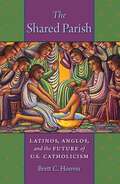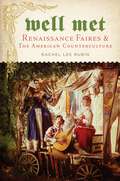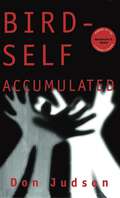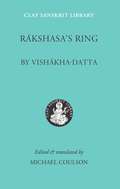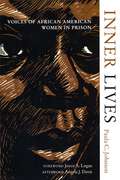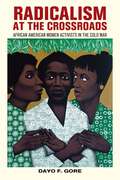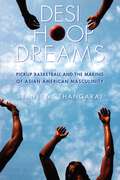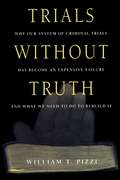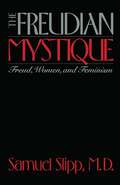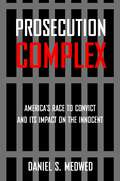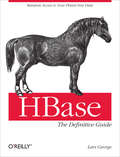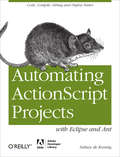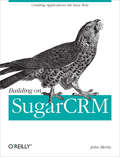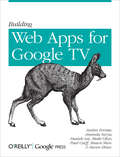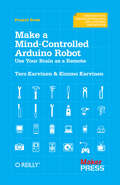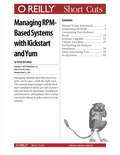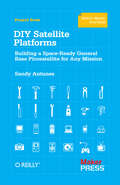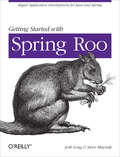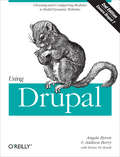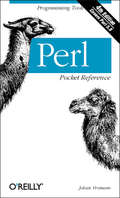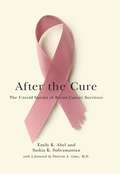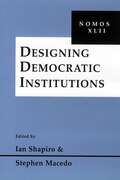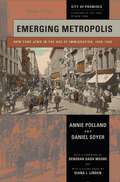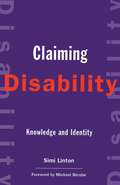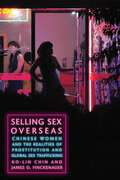- Table View
- List View
The Shared Parish: Latinos, Anglos, and the Future of U.S. Catholicism
by Brett C. HooverAsfaith communities in the United States grow increasingly more diverse, manychurches are turning to the shared parish, a single church facilityshared by distinct cultural groups who retain their own worship and ministries.The fastest growing and most common of these are Catholic parishes shared byLatinos and white Catholics. Shared parishes remain one of the few institutionsin American society that allows cultural groups to maintain their own languageand customs while still engaging in regular intercultural negotiationsover the sharedspace.Thisbook explores the shared parish through an in-depth ethnographic study of aRoman Catholic parish in a small Midwestern city demographically transformed byMexican immigration in recent decades. Through its depiction of shared parishlife, the book argues for new ways of imagining the U.S. Catholic parish as anorganization. The parish, argues Brett C. Hoover, must be conceived as botha congregation and part of a centralized system, and as onepiece in a complex social ecology. The Shared Parish alsoposits that the search for identity and adequate intercultural practice in suchparishes might call fornew approaches to cultural diversity in U.S. society, beyond assimilation ormulticulturalism. We must imagine a religious organization that accommodatesboth the need for safe space within distinct groups and for social networksthat connect these groups as they struggle to respectfully co-exist.
Well Met: Renaissance Faires and the American Counterculture
by Rachel Lee RubinThe Renaissance Faire—a 50 year-long party, communal ritual, political challenge and cultural wellspring—receives its first sustained historical attention with Well Met. Beginning with the chaotic communal moment of its founding and early development in the 1960s through its incorporation as a major “family friendly” leisure site in the 2000s, Well Met tells the story of the thinkers, artists, clowns, mimes, and others performers who make the Faire.Well Met approaches the Faire from the perspective of labor, education, aesthetics, business, the opposition it faced, and the key figures involved. Drawing upon vibrant interview material and deep archival research, Rachel Lee Rubin reveals the way the faires established themselves as a pioneering and highly visible counter cultural referendum on how we live now—our family and sexual arrangements, our relationship to consumer goods, and our corporate entertainments.In order to understand the meaning of the faire to its devoted participants,both workers and visitors, Rubin has compiled a dazzling array of testimony, from extensive conversations with Faire founder Phyllis Patterson to interviews regarding the contemporary scene with performers, crafters, booth workers and “playtrons.” Well Met pays equal attention what came out of the faire—the transforming gifts bestowed by the faire’s innovations and experiments upon the broader American culture: the underground press of the 1960s and 1970s, experimentation with “ethnic” musical instruments and styles in popular music, the craft revival, and various forms of immersive theater are all connected back to their roots in the faire. Original, intrepid, and richly illustrated, Well Met puts the Renaissance Faire back at the historical center of the American counterculture.
Bird-Self Accumulated
by Don Judson"When BooBoo stabs Morris Boyle I am reading a news magazine that someone has smuggled into the wing." Thus, the protagonist of this novella introduces us to prison, one of the several worlds he inhabits, worlds most of us would rather ignore but which inexorably, through what we see and hear and read and live on uncountable American streets, has become the one world we can no longer avoid. It seduces us with the voice of drugs and violence. Of the disenfranchised. Of those both at once outside and standing within the center of what no longer holds. It informs us of who we are today.
Rakshasa’s Ring (Clay Sanskrit Library #2)
by Vishakha-dattaThe aristocrat who wrote this vigorous political play eschewed sentimentality in favor of realistic characterization and forceful action. It is 316 BCE, one year after Chandra·gupta Maurya, aided by his subtle minister Chánakya, has seized the kingdom of Mágadha from the last king of the Nanda dynasty. Rákshasa, Nanda’s incorruptible minister, flees abroad and plots his vengeance, while Chánakya seeks to win him over to honor Chandra·gupta Maurya as his new king.The aristocrat who wrote this vigorous political play eschewed sentimentality in favor of realistic characterization and forceful action. It is 316 BCE, one year after Chandra·gupta Maurya, aided by his subtle minister Chanákya, has seized the kingdom of Mágadha from the last king of the Nanda dynasty. Rákshasa, Nanda's incorruptible minister, flees abroad and plots his vengeance, while Chanákya seeks to win him over to honor Chandra·gupta Maurya as his new king.Co-published by New York University Press and the JJC FoundationFor more on this title and other titles in the Clay Sanskrit series, please visit http://www.claysanskritlibrary.org
Inner Lives: Voices of African American Women In Prison
by Paula JohnsonAn intimate collection of African American women's voices on their lives in prisonThe rate of women entering prison has increased nearly 400 percent since 1980, with African American women constituting the largest percentage of this population. However, despite their extremely disproportional representation in correctional institutions, little attention has been paid to their experiences within the criminal justice system.Inner Lives provides readers the rare opportunity to intimately connect with African American women prisoners. By presenting the women's stories in their own voices, Paula C. Johnson captures the reality of those who are in the system, and those who are working to help them. Johnson offers a nuanced and compelling portrait of this fastest-growing prison population by blending legal history, ethnography, sociology, and criminology. These striking and vivid narratives are accompanied by equally compelling arguments by Johnson on how to reform our nation's laws and social policies, in order to eradicate existing inequalities. Her thorough and insightful analysis of the historical and legal background of contemporary criminal law doctrine, sentencing theories, and correctional policies sets the stage for understanding the current system.
Radicalism at the Crossroads: African American Women Activists in the Cold War
by Dayo F. GoreWith the exception of a few iconic moments such as Rosa Parks’s 1955 refusal to move to the back of a Montgomery bus, we hear little about what black women activists did prior to 1960. Perhaps this gap is due to the severe repression that radicals of any color in America faced as early as the 1930s, and into the Red Scare of the 1950s. To be radical, and black and a woman was to be forced to the margins and consequently, these women’s stories have been deeply buried and all but forgotten by the general public and historians alike. In this exciting work of historical recovery, Dayo F. Gore unearthsand examines a dynamic, extended network of blackradical women during the early Cold War, including establishedCommunist Party activists such as Claudia Jones,artists and writers such as Beulah Richardson, and lesser knownorganizers such as Vicki Garvin and Thelma Dale.These women were part of a black left that laid much ofthe groundwork for both the Civil Rights Movement of the1960s and later strains of black radicalism. Radicalism atthe Crossroads offers a sustained and in-depth analysis ofthe political thought and activism of black women radicalsduring the Cold War period and adds a new dimension toour understanding of this tumultuous time in United Stateshistory.
Desi Hoop Dreams: Pickup Basketball and the Making of Asian American Masculinity
by Stanley I. ThangarajSouth Asian American men are not usually depicted as ideal American men. They struggle against popular representations as either threatening terrorists or geeky, effeminate computer geniuses. To combat such stereotypes, some use sports as a means of performing a distinctly American masculinity. Desi Hoop Dreams focuses on South Asian-only basketball leagues common in most major U.S. and Canadian cities, to show that basketball, for these South Asian American players is not simply a whimsical hobby, but a means to navigate and express their identities in 21st century America.The participation of young men in basketball is one platform among many for performing South Asian American identity. South Asian-only leagues and tournaments become spaces in which to negotiate the relationships between masculinity, race, and nation. When faced with stereotypes that portray them as effeminate, players perform sporting feats on the court to represent themselves as athletic. And though they draw on black cultural styles, they carefully set themselves off from African American players, who are deemed “too aggressive.” Accordingly, the same categories of their own marginalization—masculinity, race, class, and sexuality—are those through which South Asian American men exclude women, queer masculinities, and working-class masculinities, along with other racialized masculinities, in their effort to lay claim to cultural citizenship.One of the first works on masculinity formation and sport participation in South Asian American communities, Desi Hoop Dreams focuses on an American popular sport to analyze the dilemma of belonging within South Asian America in particular and in the U.S. in general.
Trials Without Truth: Why Our System of Criminal Trials Has Become an Expensive Failure and What We Need to Do to Rebuild It
by William T. PizziUncovers a major deficiency of U.S. criminal justice—a trial system that prioritizes winning over truthReginald Denny. O. J. Simpson. Colin Ferguson. Louise Woodward: all names that have cast a spotlight on the deficiencies of the American system of criminal justice. Yet, in the wake of each trial that exposes shocking behavior by trial participants or results in counterintuitive rulings—often with perverse results—the American public is reassured by the trial bar that the case is not "typical" and that our trial system remains the best in the world. William T. Pizzi here argues that what the public perceives is in fact exactly what the United States has: a trial system that places far too much emphasis on winning and not nearly enough on truth, one in which the abilities of a lawyer or the composition of a jury may be far more important to the outcome of a case than any evidence. How has a system on which Americans have lavished enormous amounts of energy, time, and money been allowed to degenerate into one so profoundly flawed? Acting as an informal tour guide, and bringing to bear his experiences as both insider and outsider, prosecutor and academic, Pizzi here exposes the structural faultlines of our trial system and its paralyzing obsession with procedure, specifically the ways in which lawyers are permitted to dominate trials, the system's preference for weak judges, and the absurdities of plea bargaining. By comparing and contrasting the U.S. system with that of a host of other countries, Trials Without Truth provides a clear-headed, wide-ranging critique of what ails the criminal justice system—and a prescription for how it can be fixed.
The Freudian Mystique: Freud, Women, and Feminism
by Samuel Slipp"Lucid and convincing...Makes clear that [Freud's] vision was limited both by the social climate in which he worked and the personal experiences he preferred, subconsciously, not to deal with."-Los Angeles Times Sigmund Freud was quite arguably one of the most influential thinkers of the twentieth century. Yet, over the last decade, portions of his theories of the mind have suffered remarkably accurate attacks by feminists and even some conservative Freudians. How could this great mind have been so wrong about women? In The Freudian Mystique, analyst Samuel Slipp offers an explanation of how such a remarkable and revolutionary thinker could achieve only inadequate theories of female development. Tracing the gradual evolution of patriarchy and phallocentrism in Western society, Slipp examines the stereotyped attitudes toward women that were taken for granted in Freud's culture and strongly influenced his thinking on feminine psychology. Of even greater importance was Freud's relationship with his mother, who emotionally abandoned him when he was two years old. Slipp brings the tools of a trained clinician into play as he examines, from an object relations perspective, Freud's own pre-oedipal conflicts, and shows how they influenced Freud's personality as well as the male-centric shape of his theory.Not limited to only one perspective, The Freudian Mystique analyzes how the entire contextual framework of individual development, history, and culture affected Freud's work in feminine psychology. The book then looks forward, to formulating a modern biopsychosocial framework for female gender development.
Prosecution Complex: America's Race to Convict and Its Impact on the Innocent
by Daniel S. MedwedAmerican prosecutors are asked to play two roles within the criminal justice system: they are supposed to be ministers of justice whose only goals are to ensure fair trials—and they are also advocates of the government whose success rates are measured by how many convictions they get. Because of this second role, sometimes prosecutors suppress evidence in order to establish a defendant’s guilt and safeguard that conviction over time. In Prosecution Complex, Daniel S. Medwed shows how prosecutors are told to lock up criminals and protect the rights of defendants. This double role creates an institutional “prosecution complex” that animates how district attorneys’ offices treat potentially innocent defendants at all stages of the process—and that can cause prosecutors to aid in the conviction of the innocent. Ultimately, Prosecution Complex shows how, while most prosecutors aim to do justice, only some hit that target consistently.
HBase: Random Access to Your Planet-Size Data (Definitive Guide Ser.)
by Lars GeorgeIf you're looking for a scalable storage solution to accommodate a virtually endless amount of data, this book shows you how Apache HBase can fulfill your needs. As the open source implementation of Google's BigTable architecture, HBase scales to billions of rows and millions of columns, while ensuring that write and read performance remain constant. Many IT executives are asking pointed questions about HBase. This book provides meaningful answers, whether you’re evaluating this non-relational database or planning to put it into practice right away.Discover how tight integration with Hadoop makes scalability with HBase easierDistribute large datasets across an inexpensive cluster of commodity serversAccess HBase with native Java clients, or with gateway servers providing REST, Avro, or Thrift APIsGet details on HBase’s architecture, including the storage format, write-ahead log, background processes, and moreIntegrate HBase with Hadoop's MapReduce framework for massively parallelized data processing jobsLearn how to tune clusters, design schemas, copy tables, import bulk data, decommission nodes, and many other tasks
Automating ActionScript Projects with Eclipse and Ant: Code, Compile, Debug and Deploy Faster
by Sidney De KoningAutomating repetitive programming tasks is easier than many Flash/AS3 developers think. With the Ant build tool, the Eclipse IDE, and this concise guide, you can set up your own "ultimate development machine" to code, compile, debug, and deploy projects faster. You’ll also get started with versioning systems, such as Subversion and Git.Create a consistent workflow for multiple machines, or even complete departments, with the help of extensive Ant code samples. If you want to work smarter and take your skills to a new level, this book will get you on the road to automation—with Ant.Set up your Eclipse work environment with Eclipse plugins, including the FDT code editor and the Mylyn task managerEnable several developers to work on the same project simultaneously with a versioning systemWalk through the basics of Ant, and use sample code to create your first scriptCompile and debug your Ant build with FDT or the Flex SDKApply Ant to mobile development for both the Android Platform and iOS, using the Android SDK and Adobe Air
Building on SugarCRM: Creating Applications the Easy Way
by John MerticIn the crowded field of customer relationship management (CRM) systems, SugarCRM stands out—not only for its modular design, but also for the ease with which you can develop, customize, and extend your CRM applications. This concise book provides a thorough overview of the development tools and APIs available in SugarCRM 6.2, showing both developers and nondevelopers alike how to use them to build a sample application step-by-step.You'll learn how to bend and twist SugarCRM’s extensible MVC framework to create custom applications, including solutions for automating your business that go beyond traditional CRMs.Learn how SugarCRM modules interact with one another through data relationshipsBuild your CRM application with SugarCRM’s GUI developer tools—without touching codeUse built-in design templates with Module Builder to design new CRM modulesCustomize modules with the Studio tool to add new fields or additional relationships between modulesAutomate common and tedious tasks within your application, using custom PHP code with SugarCRM's powerful APIIntegrate external applications into your CRM solution through SugarCRM's web services API
Building Web Apps for Google TV
by Andres Ferrate Maile Ohye Amanda Surya Daniels Lee Shawn Shen Steven Hines Paul CarffBy integrating the Web with traditional TV, Google TV offers developers an important new channel for content. But creating apps for Google TV requires learning some new skills—in fact, what you may already know about mobile or desktop web apps isn't entirely applicable. Building Web Apps for Google TV will help you make the transition to Google TV as you learn the tools and techniques necessary to build sophisticated web apps for this platform.This book shows you how Google TV works, how it fits into the web ecosystem, and what the opportunities are for delivering rich content to millions of households.Discover the elements of a compelling TV web app, and what comprises TV-friendly navigationLearn the fundamentals for designing the 10-foot user experienceWork with the Google Chrome browser on a TV display, and migrate an existing siteUse examples for developing a TV web app, including the UI, controls, and scrollingUnderstand how to optimize, deliver, and protect video content for Google TVHelp users discover your content by optimizing your site for Search—especially videos
Make a Mind-Controlled Arduino Robot: Use Your Brain as a Remote
by Tero Karvinen Kimmo KarvinenBuild a robot that responds to electrical activity in your brain—it’s easy and fun. If you’re familiar with Arduino and have basic mechanical building skills, this book will show you how to construct a robot that plays sounds, blinks lights, and reacts to signals from an affordable electroencephalography (EEG) headband. Concentrate and the robot will move. Focus more and it will go faster. Let your mind wander and the robot will slow down.You’ll find complete instructions for building a simple robot chassis with servos, wheels, sensors, LEDs, and a speaker. You also get the code to program the Arduino microcontroller to receive wireless signals from the EEG. Your robot will astound anyone who wears the EEG headband.This book will help you:Connect an inexpensive EEG device to ArduinoBuild a robot platform on wheelsCalculate a percentage value from a potentiometer readingMix colors with an RGB LEDPlay tones with a piezo speakerWrite a program that makes the robot avoid boundariesCreate simple movement routines
Managing RPM-Based Systems with Kickstart and Yum
by Q. Ethan McCallumManaging multiple Red Hat-based systems can be easy--with the right tools. The yum package manager and the Kickstart installation utility are full of power and potential for automatic installation, customization, and updates. Here's what you need to know to take control of your systems.
DIY Satellite Platforms: Building a Space-Ready General Base Picosatellite for Any Mission
by Sandy AntunesWant to build your own satellite and launch it into space? It’s easier than you may think. The first in a series of four books, this do-it-yourself guide shows you the essential steps needed to design a base picosatellite platform—complete with a solar-powered computer-controlled assembly—tough enough to withstand a rocket launch and survive in orbit for three months.Whether you want to conduct scientific experiments, run engineering tests, or present an orbital art project, you’ll select basic components such as an antenna, radio transmitter, solar cells, battery, power bus, processor, sensors, and an extremely small picosatellite chassis. This entertaining series takes you through the entire process—from planning to launch.Prototype and fabricate printed circuit boards to handle your payloadChoose a prefab satellite kit, complete with solar cells, power system, and on-board computerCalculate your power budget—how much you need vs. what the solar cells collectSelect between the Arduino or BasicX-24 onboard processors, and determine how to use the radio transmitter and sensorsLearn your launch options, including the providers and cost requiredUse milestones to keep your project schedule in motion
Getting Started with Roo: Rapid Application Development for Java and Spring
by Steve Mayzak Josh LongSpring Roo goes a step beyond the Spring Framework by bringing true Rapid Application Development to Java—just as Grails has done with Groovy. This concise introduction shows you how to build applications with Roo, using the framework's shell as an intelligent and timesaving code-completion tool. It's an ideal RAD tool because Roo does much of the tedious code maintenance.You'll get started by building a simple customer relationship management application, complete with step-by-step instructions and code examples. Learn how to control any part of the application with Roo's opt-in feature, while using this open source framework to automate the rest of the code.Set up a Spring application and working Maven build to see Roo in actionAddress persistence with JPA and the Neo4j graph database—and learn how Roo supports NoSQL databasesUse Roo’s database reverse-engineering feature to generate a data model from an existing schemaBuild Roo applications with Spring MVC, Spring WebFlow, Google Web Toolkit, Vaadin, and other web frameworksSecure and test your application
Using Drupal: Choosing and Configuring Modules to Build Dynamic Websites
by Angela Byron Addison Berry Bruno De BondtTake advantage of Drupal’s vast collection of community-contributed modules and discover how they make this web framework unique and valuable. With this guide, you’ll learn how to combine modules in interesting ways (with minimal code-wrangling) to develop several community-driven websites— including a job posting board, photo gallery, online store, product review database, and event calendar.The second edition focuses on Drupal 7, the latest version of this open source system. Each project spans an entire chapter, with step-by-step "recipes" to help you build out the precise functionality the site requires. With this book, developers new to Drupal will gain experience through a hands-on introduction, and experienced Drupal developers will learn real-world best practices.Learn Drupal’s concepts and building blocks, and how everything works togetherHit the ground running—build your first Drupal site hands-onExplore solutions that meet each project’s requirements, and discover why specific modules were selectedUnderstand the projects through case studies, including the client’s needs and desiresLearn how to configure modules with a bird’s-eye view of how they workDiscover new modules, including Drupal Commerce, Media, and Workbench
Perl Pocket Reference
by Johan VromansThe Perl Pocket Reference is an invaluable reference for those who find themselves frequently searching for a quick answer to a question or reminder of a syntax rule. This handy, well-organized quick reference condenses stacks of Perl documentation down to the most essential at-your-fingertips facts. For ease-of-use, convenience, and price, this little reference is the first place Perl programmers look when they need an answer quickly.The Perl Pocket Referenc provides a complete overview of the Perl programming language, all packed into a convenient, carry-around booklet. It is updated for Perl 5.8, and covers a summary of Perl syntax rules, a complete list of operators, built-in functions, and standard library modules, all with brief descriptions. Also included are the newest Perl features, such as enhanced regular expressions, multithreading, the Perl compiler, and Unicode support.The Perl Pocket Reference, 4th Edition, is the perfect companion to the authoritative books on Perl published by O'Reilly & Associates: Programming Perl, Learning Perl, and the Perl Cookbook. This pocket reference will never make it to the bookshelf--dog-eared and well worn, it will remain within arms reach of the keyboard or tucked in a back pocket, where it will be referred to on a daily basis.
After the Cure: The Untold Stories of Breast Cancer Survivors
by Emily K. Abel Saskia K. Subramanian2009 Choice Outstanding Academic Title2009 Association of American University Presses Award for Jacket DesignThe stories of 70 women living in the aftermath of breast cancerChemo brain. Fatigue. Chronic pain. Insomnia. Depression. These are just a few of the ongoing, debilitating symptoms that plague some breast-cancer survivors long after their treatments have officially ended. While there are hundreds of books about breast cancer, ranging from practical medical advice to inspirational stories of survivors, what has been missing until now is testimony from the thousands of women who continue to struggle with persistent health problems.After the Cure is a compelling read filled with fascinating portraits of more than seventy women who are living with the aftermath of breast cancer. Emily K. Abel is one of these women. She and her colleague, Saskia K. Subramanian, whose mother died of cancer, interviewed more than seventy breast cancer survivors who have suffered from post-treatment symptoms. Having heard repeatedly that “the problems are all in your head,” many don't know where to turn for help. The doctors who now refuse to validate their symptoms are often the very ones they depended on to provide life-saving treatments. Sometimes family members who provided essential support through months of chemotherapy and radiation don't believe them. Their work lives, already disrupted by both cancer and its treatment, are further undermined by the lingering symptoms. And every symptom serves as a constant reminder of the trauma of diagnosis, the ordeal of treatment, and the specter of recurrence.Most narratives about surviving breast cancer end with the conclusion of chemotherapy and radiation, painting stereotypical portraits of triumphantly healthy survivors, women who not only survive but emerge better and stronger than before. Here, at last, survivors step out of the shadows and speak compellingly about their “real” stories, giving voice to the complicated, often painful realities of life after the cure. This book received funding from the Susan G. Komen Foundation.
Designing Democratic Institutions: Nomos XLII (NOMOS - American Society for Political and Legal Philosophy #32)
by Stephen Macedo Ian ShapiroAs the principles and practices of democracy continue to spread ever more widely, it is hard to imagine a corner of the globe into which they will not eventually penetrate. But the euphoria of democratic revolutions is typically short-lived, and usually followed by disgruntlement and even cynicism about the actual operation of democratic institutions. It is widely accepted that democracy is a good thing. However democrats have much work to do in improving the performance of democratic institutions. The essays in this volume focus on this difficult and vital challenge: how can we improve the design of democratic institutions? How can public deliberation in democracies be enhanced? How can elections be reformed so as to dampen the excessive influence of special interests, especially those with money? How can democratic institutions be reformed so they can deal with issues that transcend the boundaries of the nation-state? And finally, how can democratic practices better take account of the internal plurality of societies that are ethnically or otherwise divided? Contributors: Brooke Ackerly, Ian Ayres, Geoffrey Brennan, John Ferejohn, Alan Hamlin, Russell Hardin, Donald Horowitz, Stephen Macedo, Philip Petit, Philippe C. Schmitter, Ian Shapiro, Philippe Van Parjis, Iris Marion Young.
Emerging Metropolis: New York Jews in the Age of Immigration, 1840-1920 (City of Promises #4)
by Daniel Soyer Annie PollandDescribes New York’s transformation into a Jewish cityEmerging Metropolis tells the story of New York’s emergence as the greatest Jewish city of all time. It explores the Central European and East European Jews’ encounter with New York City, tracing immigrants’ economic, social, religious, political, and cultural adaptation between 1840 and 1920. This meticulously researched volume shows how Jews wove their ambitions and aspirations—for freedom, security, and material prosperity—into the very fabric and physical landscape of the city.
Claiming Disability: Knowledge and Identity (Cultural Front #14)
by Simi LintonA comprehensive assessment of the field of Disability Studies that presents beyond the medical to dig into the meaningFrom public transportation and education to adequate access to buildings, the social impact of disability has been felt everywhere since the passage of the Americans with Disabilities Act in 1990. And a remarkable groundswell of activism and critical literature has followed in this wake. Claiming Disability is the first comprehensive examination of Disability Studies as a field of inquiry. Disability Studies is not simply about the variations that exist in human behavior, appearance, functioning, sensory acuity, and cognitive processing but the meaning we make of those variations. With vivid imagery and numerous examples, Simi Linton explores the divisions society creates—the normal versus the pathological, the competent citizen versus the ward of the state. Map and manifesto, Claiming Disability overturns medicalized versions of disability and establishes disabled people and their allies as the rightful claimants to this territory.
Selling Sex Overseas: Chinese Women and the Realities of Prostitution and Global Sex Trafficking
by Ko-lin Chin James O. Finckenauer2013 Outstanding Book Award Winner from the Division of International Criminology, American Society of CriminologyEvery year, thousands of Chinese women travel to Asia and the United States in order to engage in commercial sex work. In Selling Sex Overseas, Ko-lin Chin and James Finckenauer challenge the current sex trafficking paradigm that considers all sex workers as victims, or sexual slaves, and as unwilling participants in the world of commercial sex. Bringing to life an on-the-ground portrait of this usually hidden world, Chin and Finckenauer provide a detailed look at all of its participants: sex workers, pimps, agents, mommies, escort agency owners, brothel owners, and drivers. Ultimately, they probe the social, economic, and political organization of prostitution and sex trafficking, contradicting many of the ‘moral crusaders’ of the human trafficking world.
